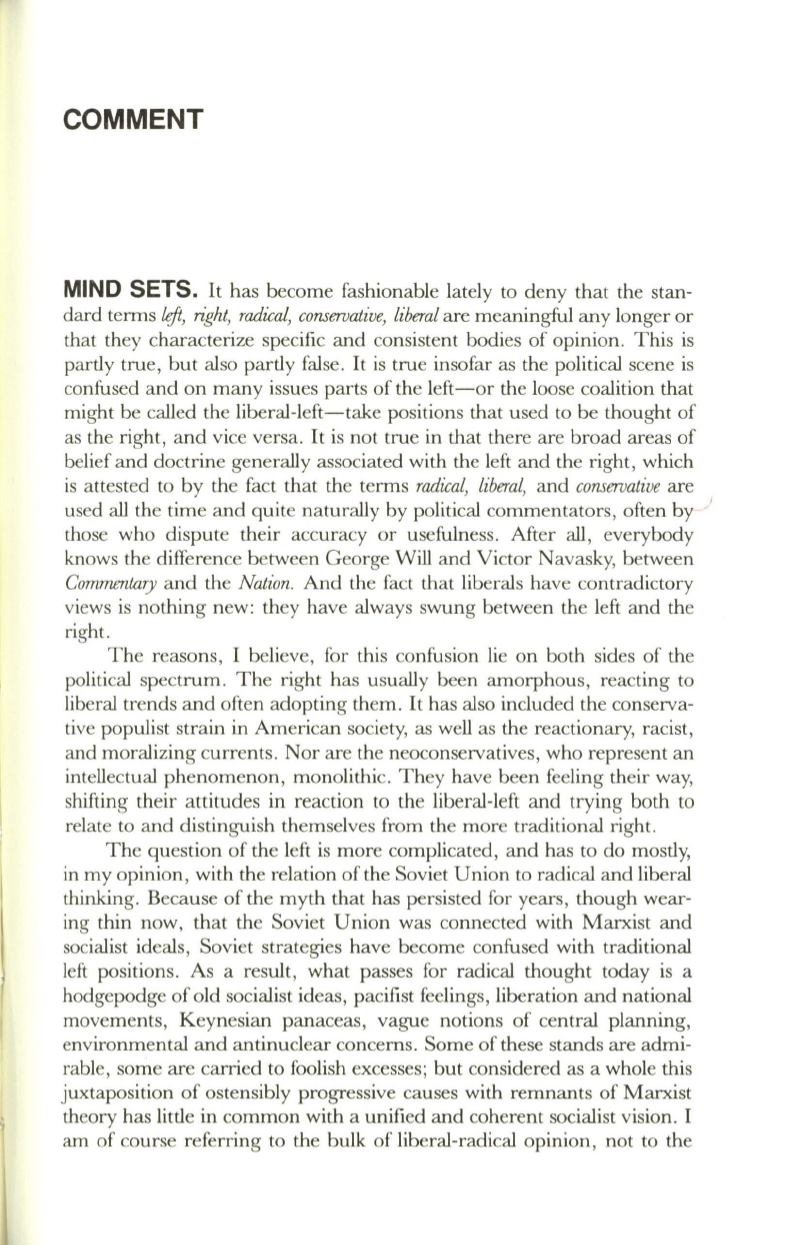
COMMENT
MIND SETS.
It has become fashionable lately to deny that the stan–
dard terms
lift,
right, radical, conservative, liberal
are meaningful any longer or
that they characterize specific and consistent bodies of opinion. This is
partly true , but also partly false. It is true insofar as the political scene is
confused and on many issues parts of the left-or the loose coalition that
might be called the liberal-left-take positions that used to be thought of
as the right, and vice versa. It is not true in that there are broad areas of
belief and doctrine generally associated with the left and the right, which
is attested to by the fact that the terms
radical, liberal,
and
conservative
are
used all the time and quite naturally by political commentators, often by
those who dispute their accuracy or usefulness. After all , everybody
knows the difference between George Will and Victor Navasky, between
Commentary
and the
Nation.
And the fact that liberals have contradictory
views is nothing new: they have always swung between the left and the
right.
The reasons, I believe, for this confusion lie on both sides of the
political spectrum . The right has usually been amorphous, reacting to
liberal trends and often adopting them. It has also included the conserva–
tive populist strain in American society, as well as the reactionary, racist,
and moralizing currents. Nor are the neoconservatives, who represent an
intellectual phenomenon, monolithic. They have been feeling their way,
shifting their attitudes in reaction to the liberal-left and trying both to
relate to and distinguish themselves from the more traditional right.
The question of the left is more complicated, and has to do mostly,
in my opinion, with the relation of the Soviet Union to radical and liberal
thinking. Because of the myth that has persisted for years, though wear–
ing thin now, that the Soviet Union was connected with Marxist and
socialist ideals, Soviet strategies have become confused with traditional
left positions. As a result, what passes for radical thought today is a
hodgepodge of old socialist ideas, pacifist feelings, liberation and national
movements, Keynesian panaceas, vague notions of central planning,
environmental and antinuclear concerns. Some of these stands are admi–
rable, some are carried to foolish excesses; but considered as a whole this
juxtaposition of ostensibly progressive causes with remnants of Marxist
theory has little in common with a unified and coherent socialist vision. I
am of course referring to the bulk of liberal-radical opinion, not to the


